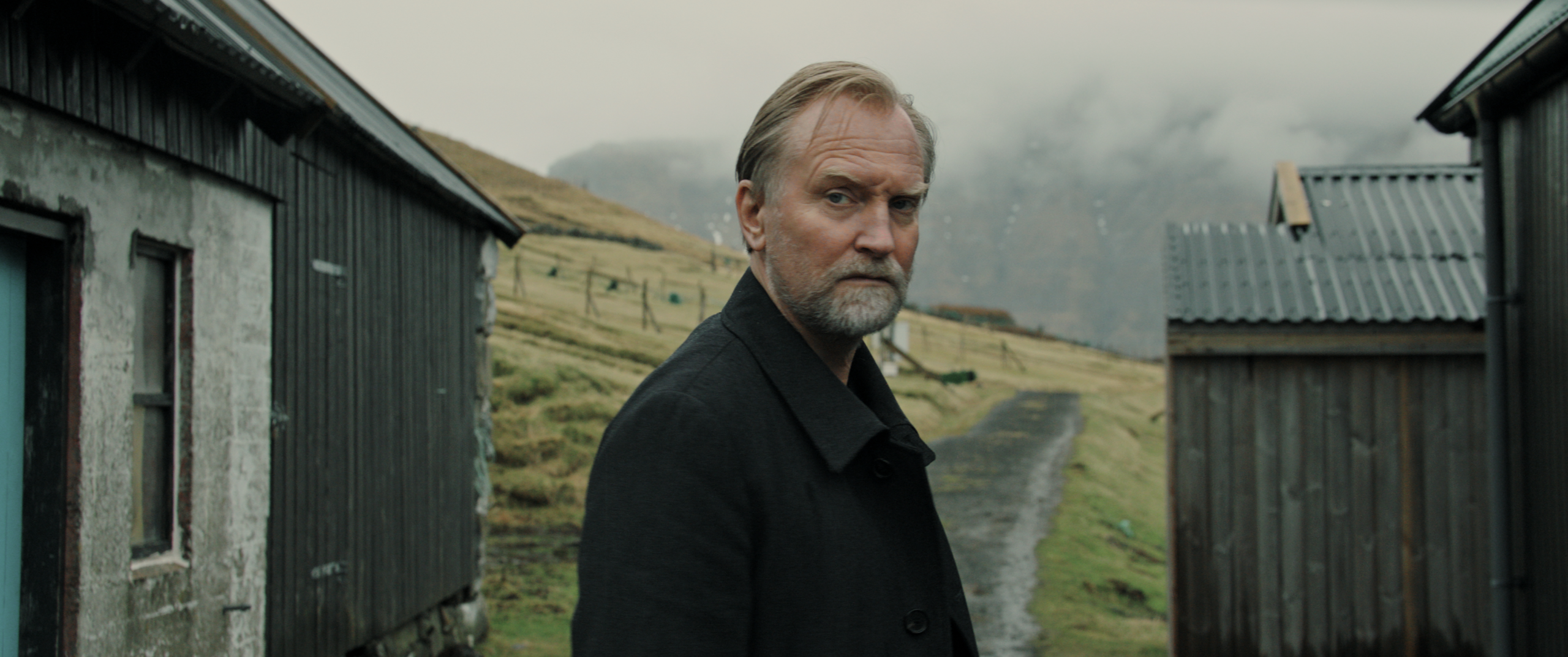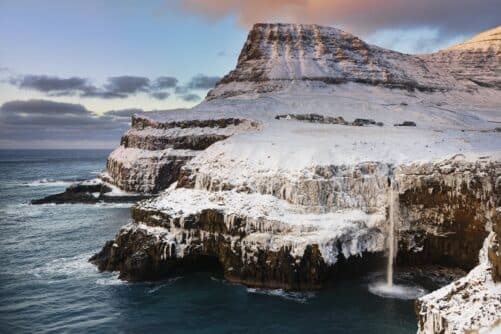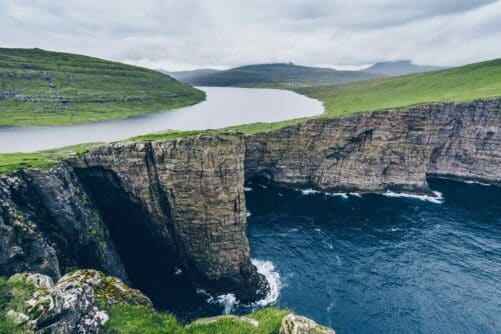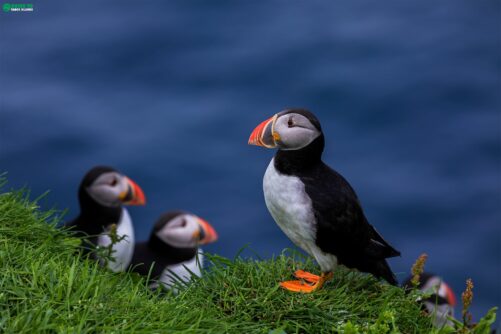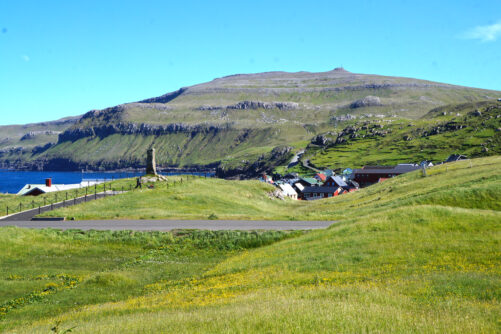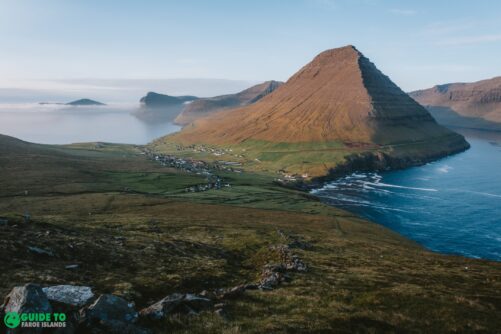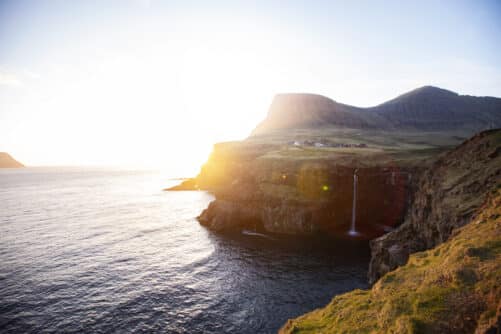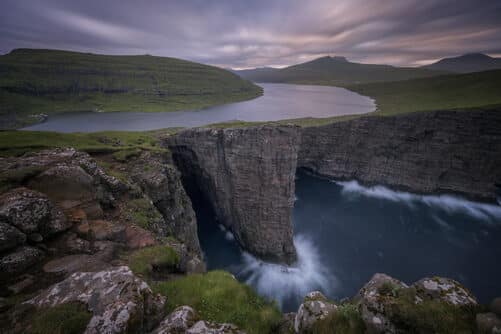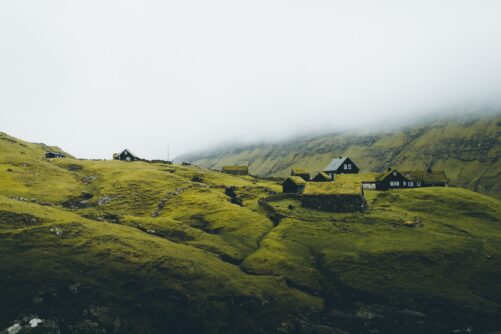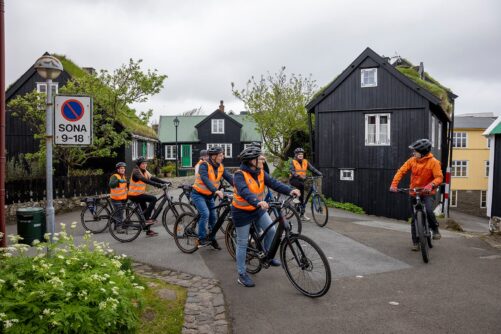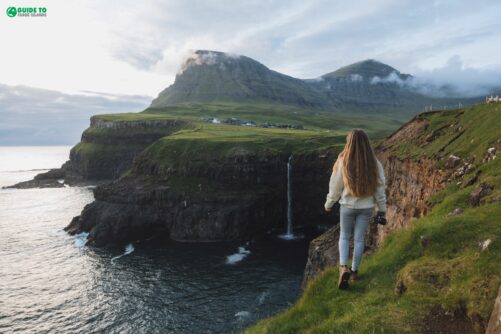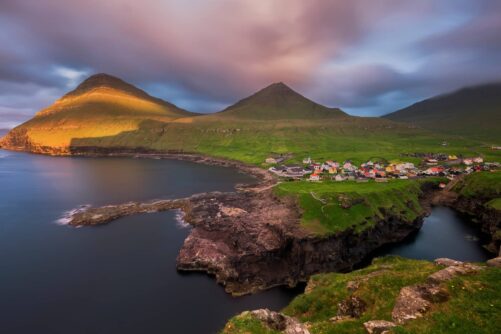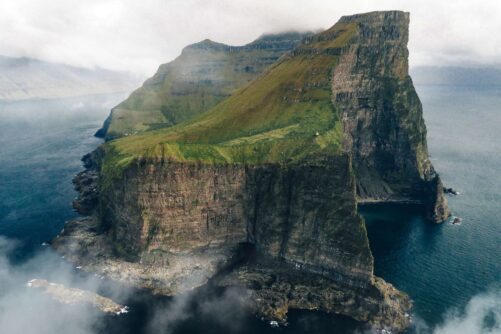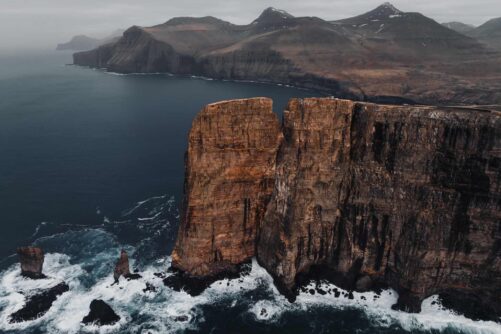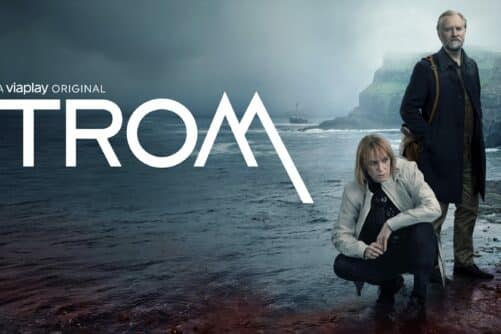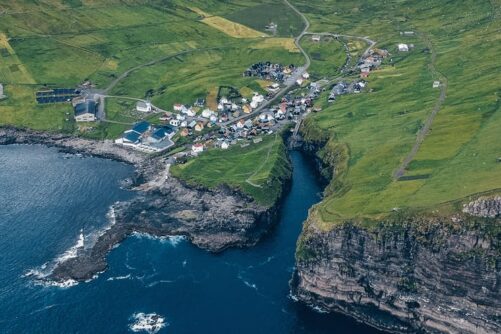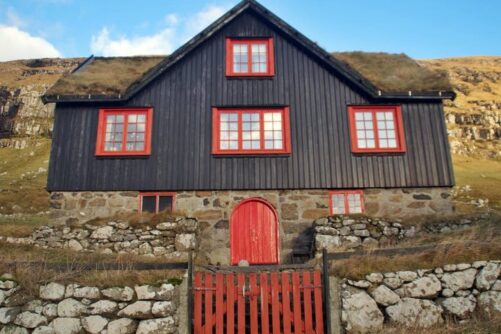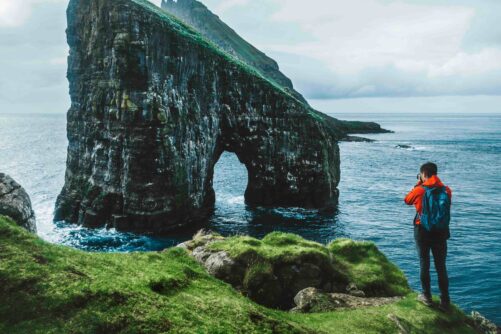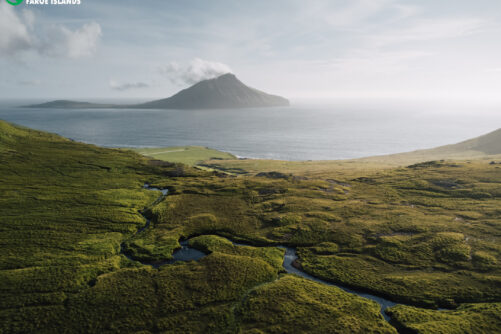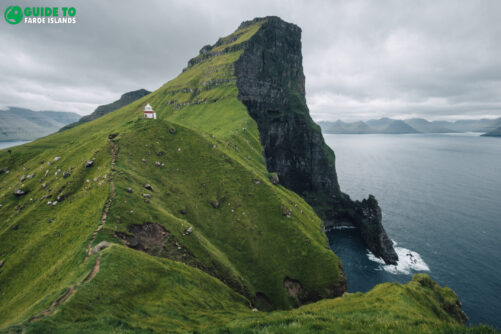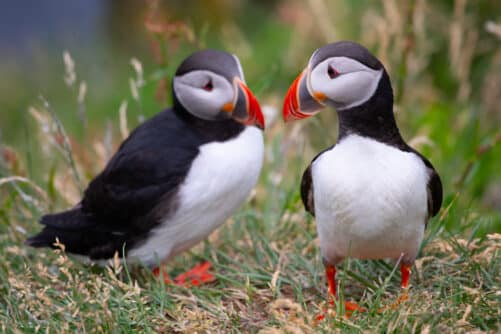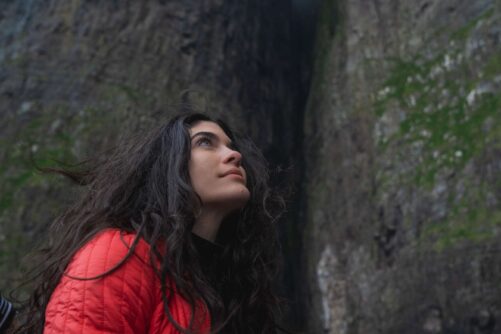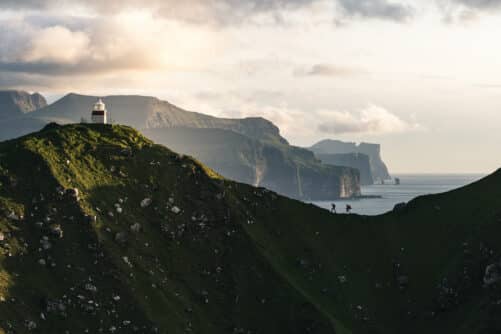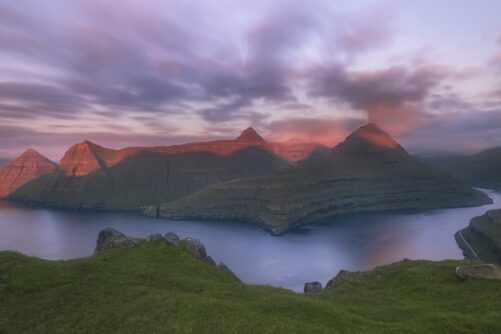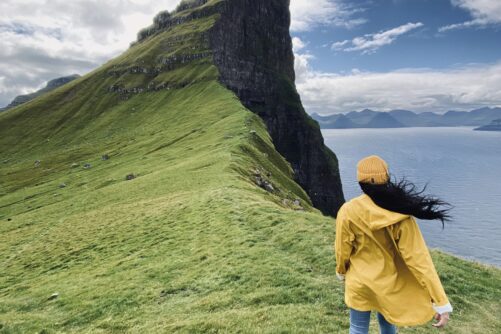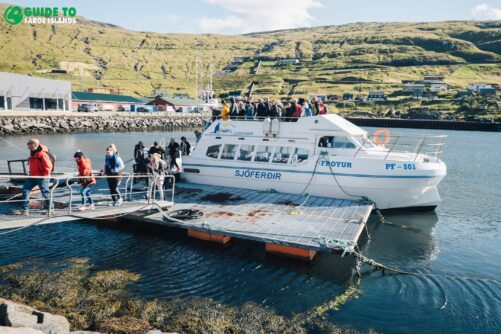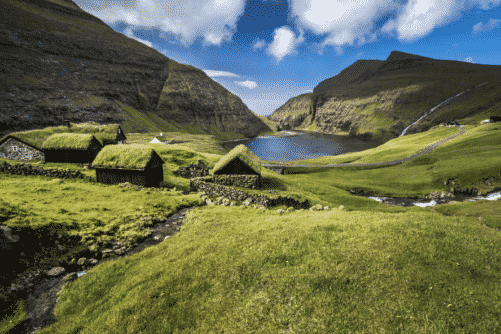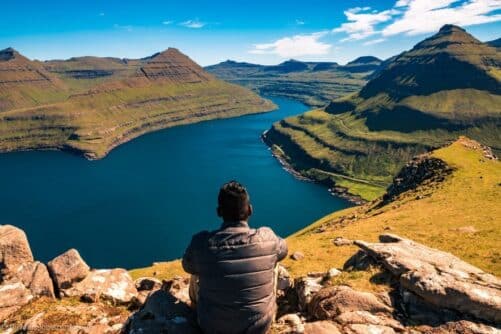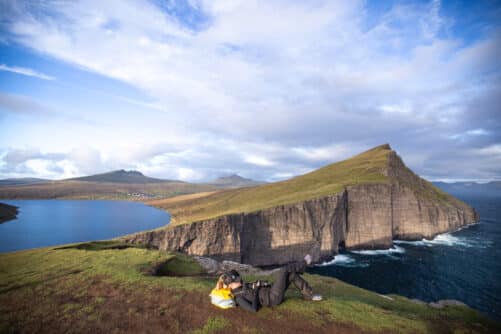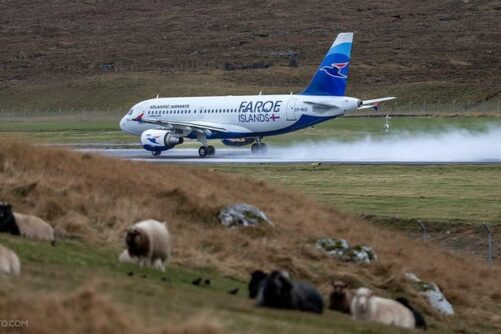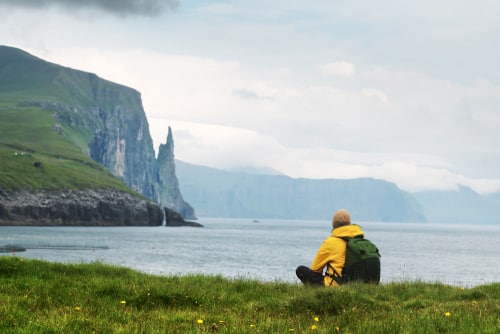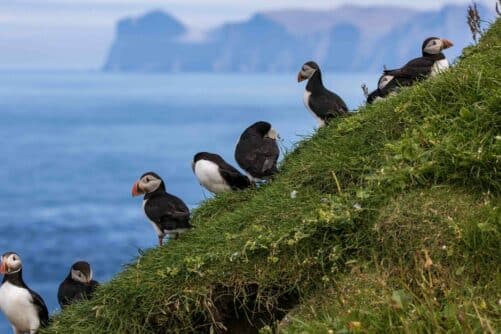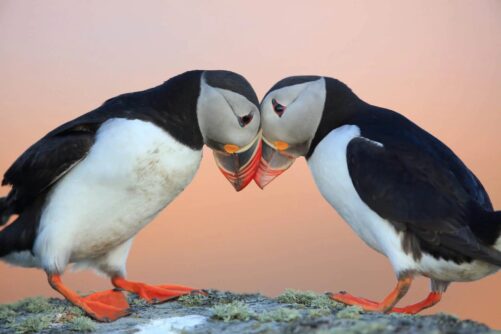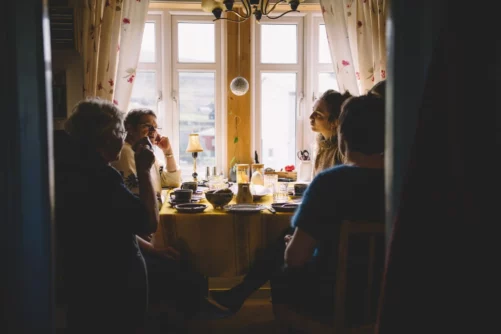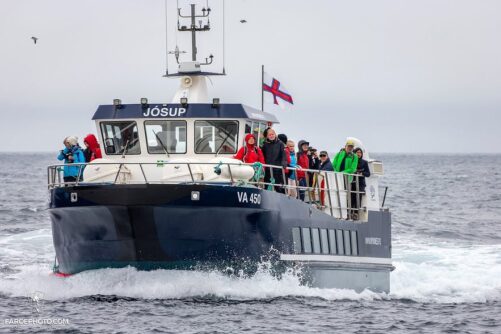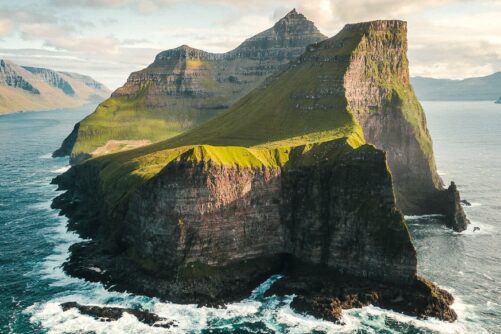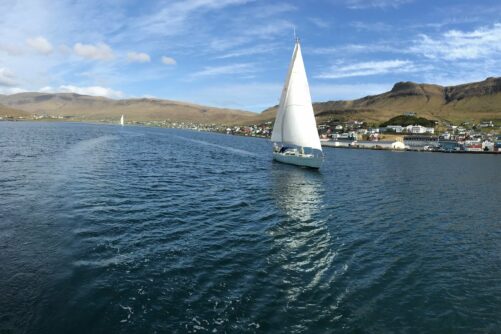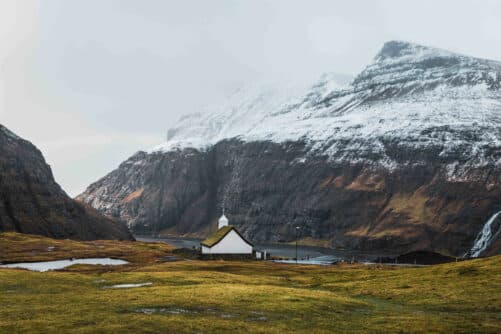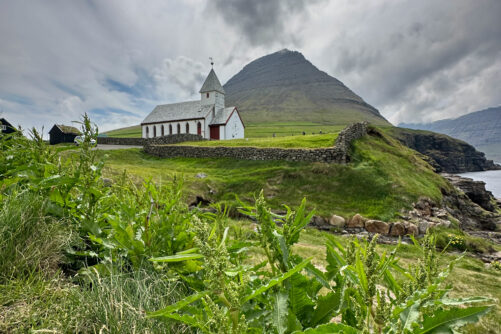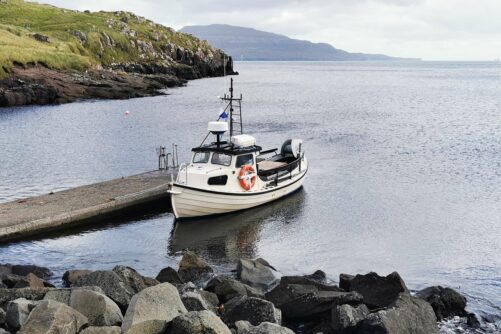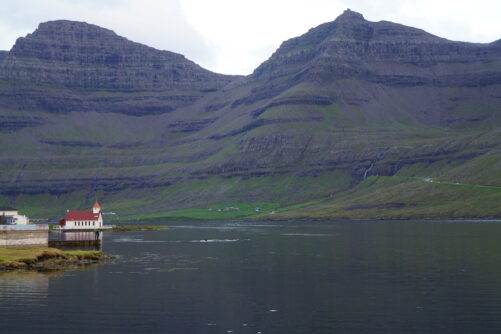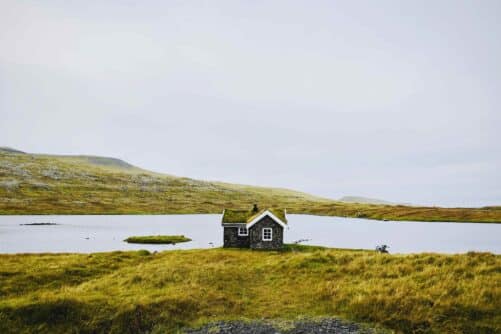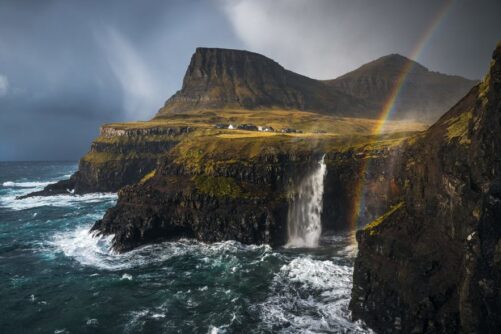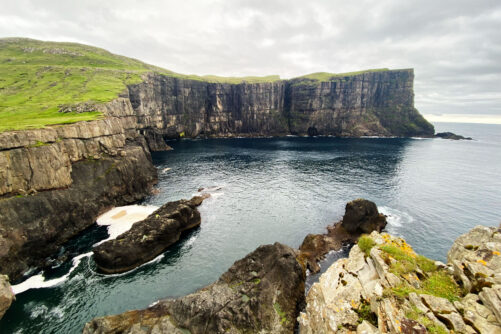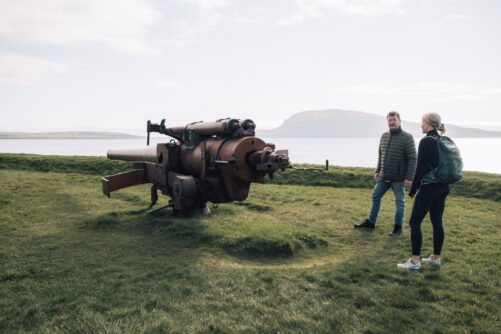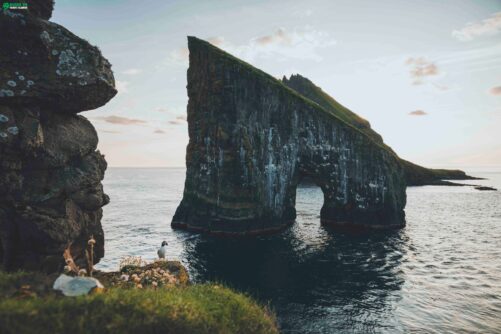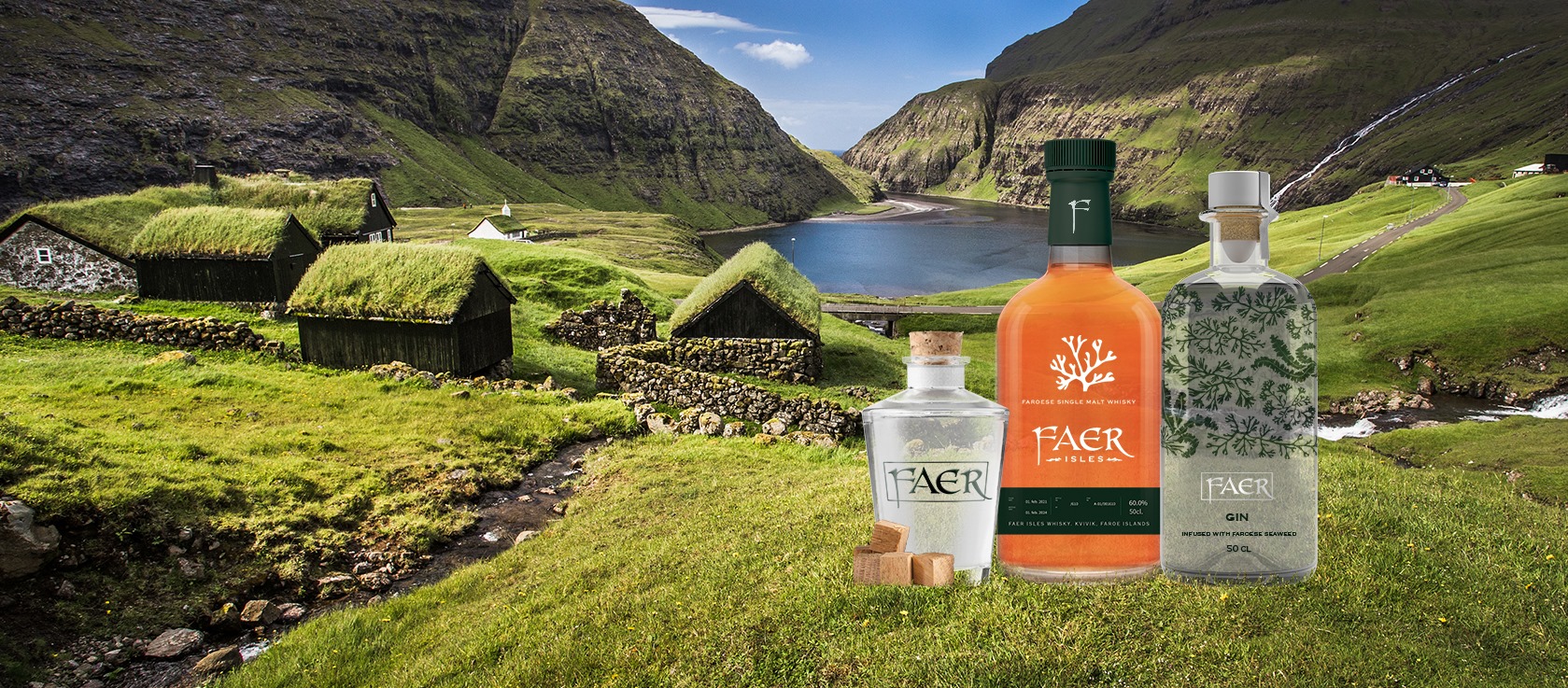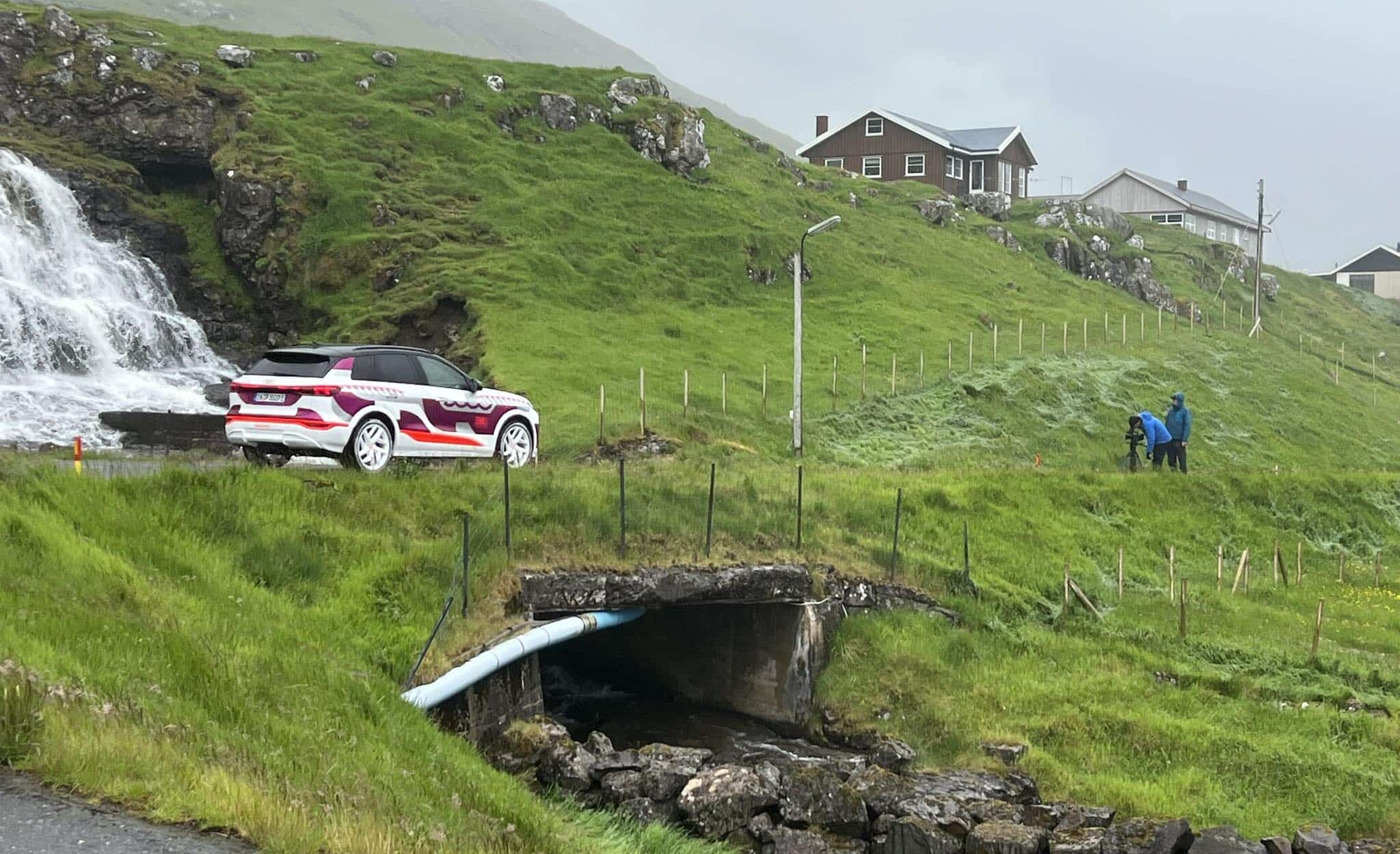
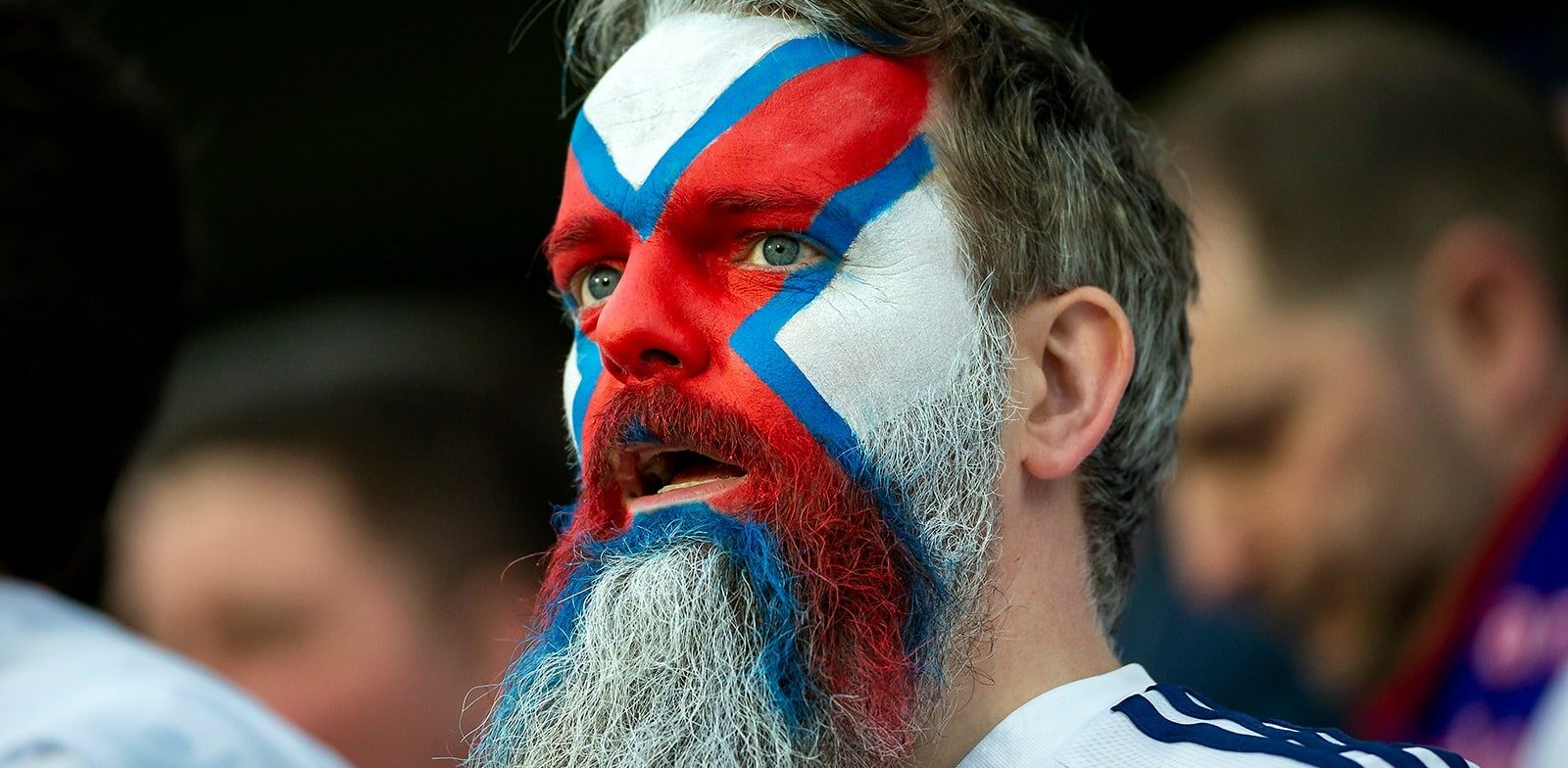
The Faroe Islands Flag | A Story of Identity

What does the flag of the Faroe Islands look like? How old is the Faroese flag? What does Merkið mean? Continue reading and get the full story of the flag of the Faroe Islands.
- Explore a wealth of Day Tours in Faroe Islands
- Discover the Faroese Language
- Get to know the Best Hotels in Faroe Islands
- Browse the largest selection of Cultural Activities in the Faroe Islands
The story of the Faroe Islands flag is the story of the people of the Faroe Islands. The flag represents the aim for national identity, for cultural autonomy and a commitment to a bright future. Wherever you see the flag of the Faroe Islands, it exemplifies the experience that travellers have of people and nature in the Faroe Islands.
Located halfway between Iceland and Scotland, the untamed archipelago is hardly visible on a map. As most people have never noticed the Faroe Islands on a world map, having a strong identity comes natural. The Faroe Islanders are happy to use their flag.
The National Flag of the Faroe Islands

As a visitor to the Faroe Islands, you will for sure encounter the Faroese flag during your stay. You will find the flag outside the Prime Minister’s Office on the Tinganes peninsula in Tórshavn. In addition, you will find it at the Tórsvøllur national stadium during Faroe Islands football matches and on the many fishing vessels throughout the islands.
Designed by Faroese university students in 1919, Merkið was first used for sporting events and other cultural occasions. Merkið was recognised in 1940 amid the Second World War.
Flag Day in the Faroe Islands is annual event on 25 April. It is a Public Holiday and it always includes parades, speeches, and brass music.
Experience The Flag Day or as Faroe Islanders say Flaggdagur in several villages across the archipelago. The flag celebration gives the islanders a sense of belonging.

The annual event on 25 April marks the day when BBC announced that Faroese vessels should use their own flag Merkið when at sea. As BBC aired the news in several languages, the message reached all corners of the world.
The Faroese flag is one of the most recognisable symbols of the 18 unspoiled islands in the North Atlantic Ocean. Today, the guidelines for how to use the flag are written in a simple law called Flagglógin the Flag Law.
Faroe Islands Flag History

Back in 1940, Britain did a friendly occupation of the Faroe Islands. Brits promised to protect the island group during World War ll. Then, as now, fish was the main source of wealth for the islanders.
Faroese vessels sailed the extremely dangerous waters between especially Britain, Faroe Islands and Iceland during the Second World War. Bombing attacks killed many young fishermen at sea.
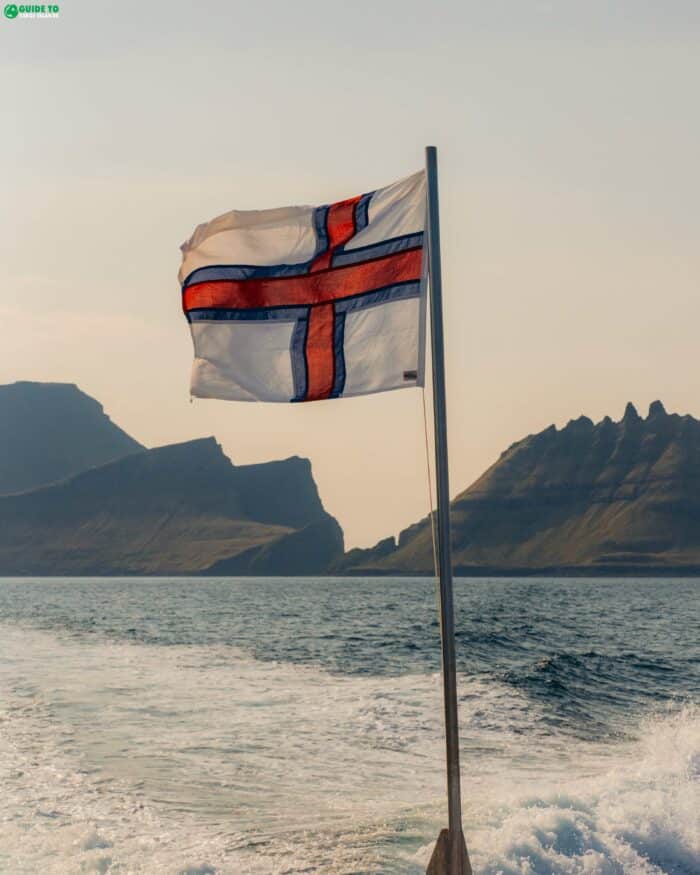
Hans Mikkelsen was skipper onboard the fishing smack Eysturoy when sailing from Sørvágur to Aberdeen. This was in 1940. The Royal Navy intercepted the fishing vessel. The Faroese skipper was asked if he could identify himself with another than the flag of a German occupied territory. He had a Faroese Merkið onboard and raised the flag. Now captains hoist the flag legally at sea.
The flag was first used at sea many years before it was legalised. Óla Jákup Kristoffersen from Vestmanna was a captain onboard the fishing smack Neptun when he as the first person flagged onboard a vessel with the Faroese flag. This was in the 1920s more than 10 years before the flag was recognised.
See the First Faroese Flag
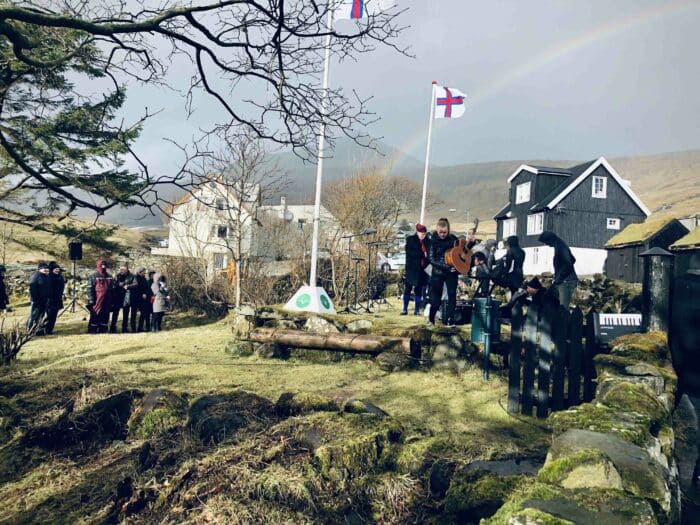
Merkið means “the sign”. You can see the first Faroese flag ever designed in the village Fámjin on Suðuroy Island. The young student Jens Oliver Lisberg from Fámjin was among those who created the Faroese flag. The flag is at display in the church in Fámjin.
The red, blue, and white coloured flag design uses the same principles as the flags of the other Nordic countries. The left offset cross represents Christianity. The flag has a red cross with a small blue stripe on a pure white field.

You will find the red and blue colours in traditional clothing in the Faroe Islands. The flag’s white background is a symbol of the foam after waves break onto the coasts around the islands.
Want to see the Faroese flag flying in the unbelievable surroundings in the Faroe Islands? Take a look at flights to the Faroe Islands and take the next step.
